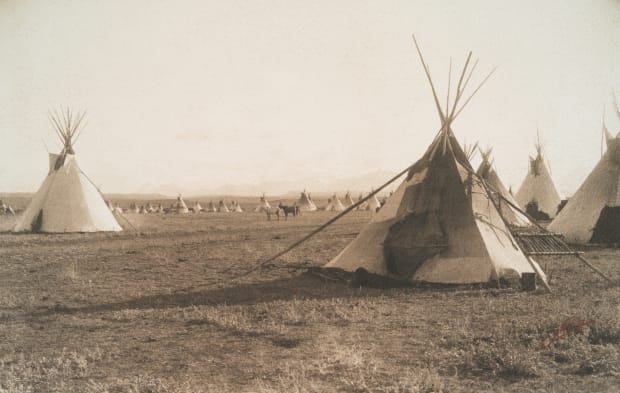Table of Contents
Folktales, Myths, and Legends
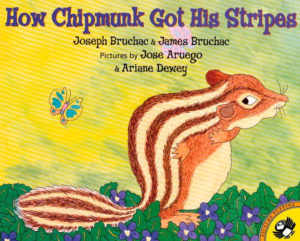 |
Joseph Bruchac has written many wonderful versions of Native American legends in picture-book format for young readers. Among these are The First Strawberries (Puffin, 1998), How Chipmunk Got His Stripes (Puffin, 2003), Turtle’s Race with Beaver (Puffin, 2005), and Rabbit’s Snow Dance (Dial Books, 2012), |
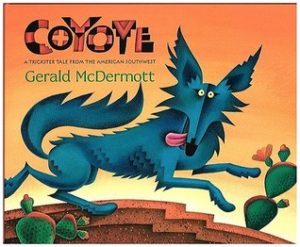 |
Gerald McDermott’s brightly illustrated picture books of Native American tales include Coyote: A Trickster Tale from the American Southwest (HMH, 1999), Raven: A Trickster Tale from the Pacific Northwest (HMH, 2001), Jabuti the Tortoise: A Trickster Tale from the Amazon (HMH, 2005), and Arrow to the Sun: A Pueblo Indian Tale (Puffin, 1977). For ages 4-8. |
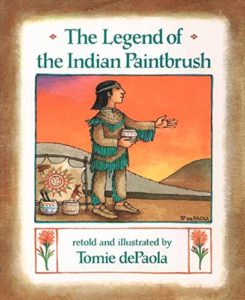 |
By Tomie de Paola, The Legend of the Indian Paintbrush (Putnam & Grosset, 1996) is the story of a young Plains Indian boy who has a dream vision of creating a painting in all the colors of the sunset – and how this at last came to pass. For ages 4-8. Also by de Paola, see The Legend of the Bluebonnet (Puffin, 1996), the story of a courageous Comanche girl who finds a way to bring much-needed rain to her tribe. |
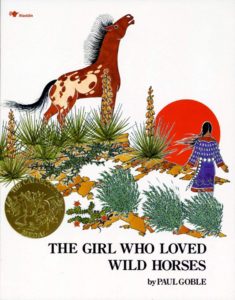 |
Paul Goble’s beautifully illustrated picture books of Native American stories include The Girl Who Loved Wild Horses (Aladdin, 1993), The Gift of the Sacred Dog (Aladdin, 1984), Buffalo Woman (Aladdin, 1987), Star Boy (Aladdin, 1991), and Dream Wolf (Aladdin, 1997). |
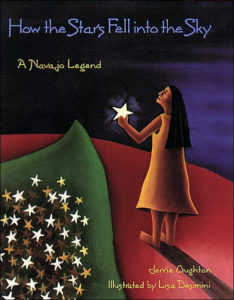 |
Jerrie Oughton’s How the Stars Fell Into the Sky (HMH, 1996) is a Navajo legend about how First Woman prepared to write the laws of the land in star patterns in the sky – only to have rambunctious Coyote scatter them far and wide. For ages 4-8. |
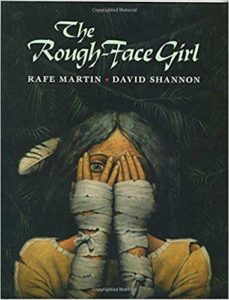 |
Rafe Martin’s The Rough-face Girl (Puffin, 1998) is a lovely Algonquin version of the Cinderella story for ages 4-8. |
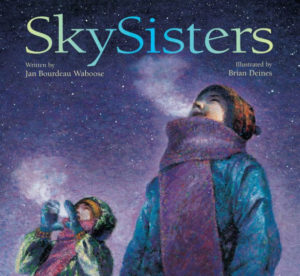 |
In Jan Bourdeau Waboose’s SkySisters (Kids Can Press, 2002), a pair of Ojibway sisters set off on a frozen trek to see the SkySpirits dance – that is, the glorious northern lights. For ages 5-8. |
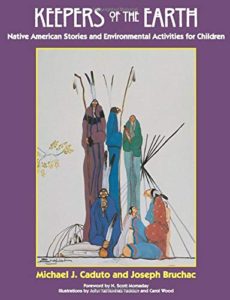 |
By Michael J. Caduto and Joseph Bruchac, Keepers of the Earth (Fulcrum, 1997) is a superb collection of Native American folktales paired with background information and hands-on environmental activities. For ages 7 and up. In the same format, see Keepers of Life: Discovering Plants through Native American Stories, Keepers of the Animals: Native American Stories and Wildlife Activities, and Keepers of the Night: Native American Stories and Nocturnal Activities. |
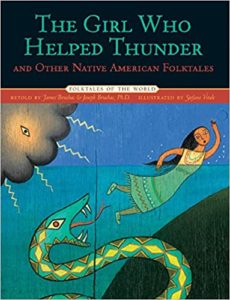 |
Adapted by James and Joseph Bruchac, The Girl Who Helped Thunder and Other Native American Folktales (Sterling, 2008) is a collection of native folktales arranged geographically. The illustrated tales come from a wide range of peoples and cultures, among them Cherokee, Cheyenne, Hopi, Seminole, Seneca, and more, each introduced with historical background information. For ages 8-12. |
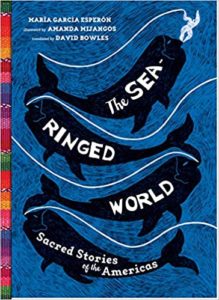 |
By Maria Garcia Esperon, The Sea-Ringed World (Levine Querido, 2021) is a visually gorgeous collection of sacred stories from the native nations and cultures of the Americas. Included are a culture guide, a map, and a glossary. For ages 8 and up. |
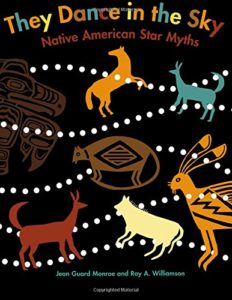 |
By Ray. A. Williamson, They Dance in the Sky (HMH, 2007) is a collection of Native American star myths from a range of native cultures. For ages 10 and up. |
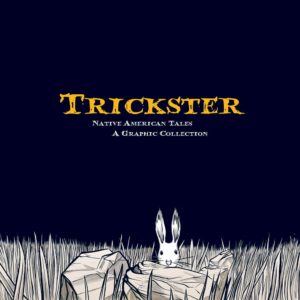 |
Edited by Matt Dembicki, the graphic novel Trickster (Chicago Review Press, 2010) is a collection of 21 Native American trickster tales, variously involving coyotes, ravens, rabbits, alligators, beavers, and more. For ages 10 and up. |
Native American Life
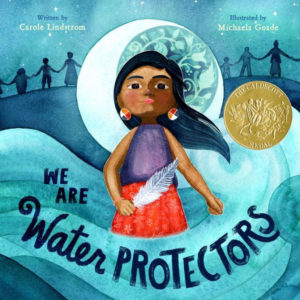 |
Carole Lindstrom’s Caldecott Medal winner We Are Water Protectors (Roaring Brook Press, 2020), gorgeously illustrated by Michaela Goade, is a magical and poetic environmental plea in defense of the world’s water inspired by indigenous activist movements. A beautiful book for ages 4 and up. |
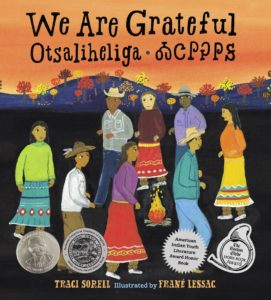 |
By Traci Sorell, We Are Grateful: Otsaliheliga (Charlesbridge, 2018) is a picture-book demonstration of the many ways in which the Cherokee express gratitude – with the word “otsaliheliga” – in an illustrated trip through the year and seasons. For ages 4-8. |
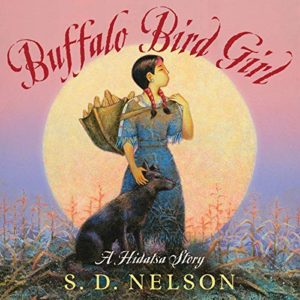 |
S.D. Nelson’s Buffalo Bird Girl: A Hidatsa Story (Harry N. Abrams, 2012) is the picture-book story of a young girl who lived in a Hidatsa village near the Missouri River in the mid- to late-19th century. Told in the first person, using the actual story of Buffalo Bird Woman as recorded by an anthropologist in 1906, and supplemented with archival photos. For ages 6-10. |
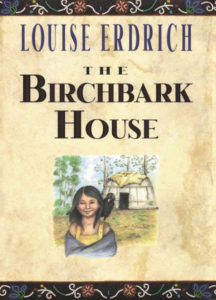 |
Louise Erdrich’s The Birchbark House (Hyperion, 2002) is the story of Omakayas – Little Frog – an Ojibwe girl, growing up with her family on an island in Lake Superior in 1847. Often recommended as an alternative to Laura Ingalls Wilder’s Little House books, which are set in the same time period, but told from a white settler’s perspective. For ages 8-12.
|
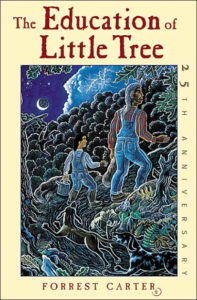 |
Forrest Carter’s The Education of Little Tree (University of New Mexico Press, 2001), set during the Great Depression in the mountains of Tennessee, is the story of the orphaned boy known as Little Tree, sent to live with his Cherokee grandparents – where he learns about Native American culture, customs, and philosophies. For ages 12 and up. It’s a lovely and well-written book. Here’s the problem: since its publication in 1976, when it claimed to be a true story, it has been discovered to be a fiction and that its actual author was Asa Earl Carter, a white supremacist and Ku Klux Klan organizer. (See Biblio Hoaxes: The Education of Little Tree.) Despite some inaccuracies, it remains a highly rated coming-of-age novel – and certainly, given its provenance, provides a lot of food for discussion. |
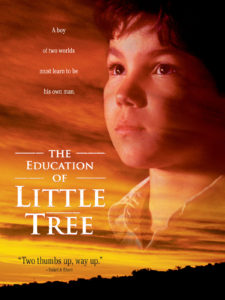 |
The movie version of The Education of Little Tree (1997) is rated PG. |
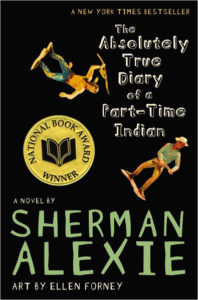 |
Sherman Alexie’s The Absolutely True Diary of a Part-Time Indian (Little, Brown, 2009) is the story of Junior who wants to be a cartoonist – the book is illustrated with his cartoons – growing up on the Spokane Indian Reservation. Then he decides to switch to the all-white high school – where the only other Indian is the school mascot. Funny, heartbreaking, and based on Alexie’s own experiences. A National Book Award winner. For ages 12 and up. |
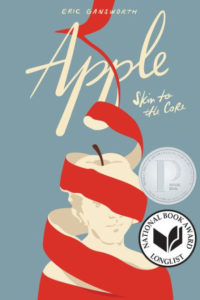 |
Eric Gansworth’s Apple (Levine Querido, 2020) is a stunning memoir in verse by an Onondaga quthor and artist, raised on a reservation. (The apple of the title is a pejorative term, used for someone who supposedly is “red on the outside, white on the inside.”) Creatively designed and illustrated with photos and graphic art. For ages 12-18. |
